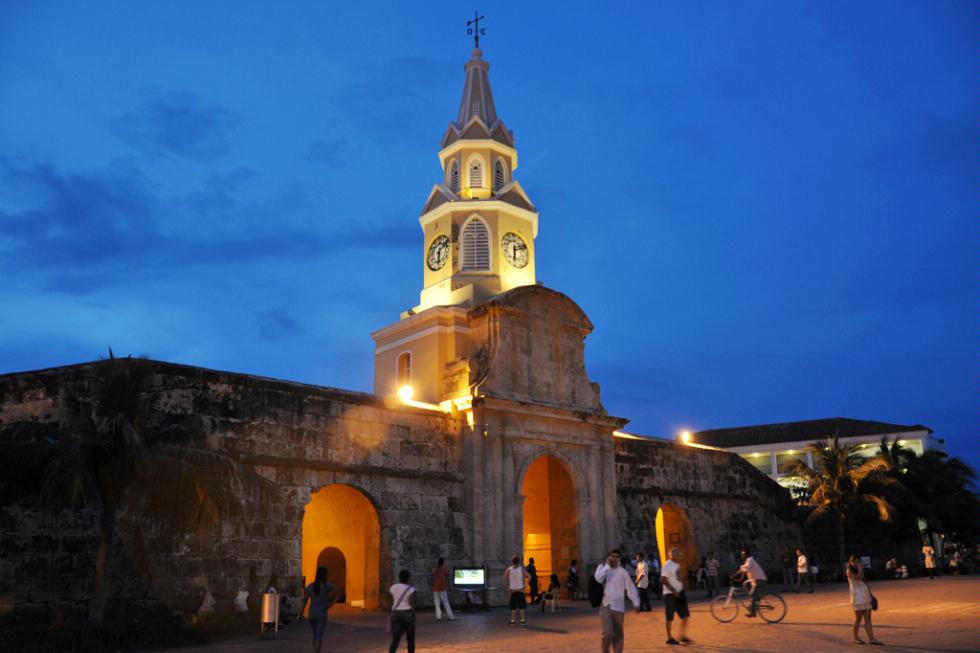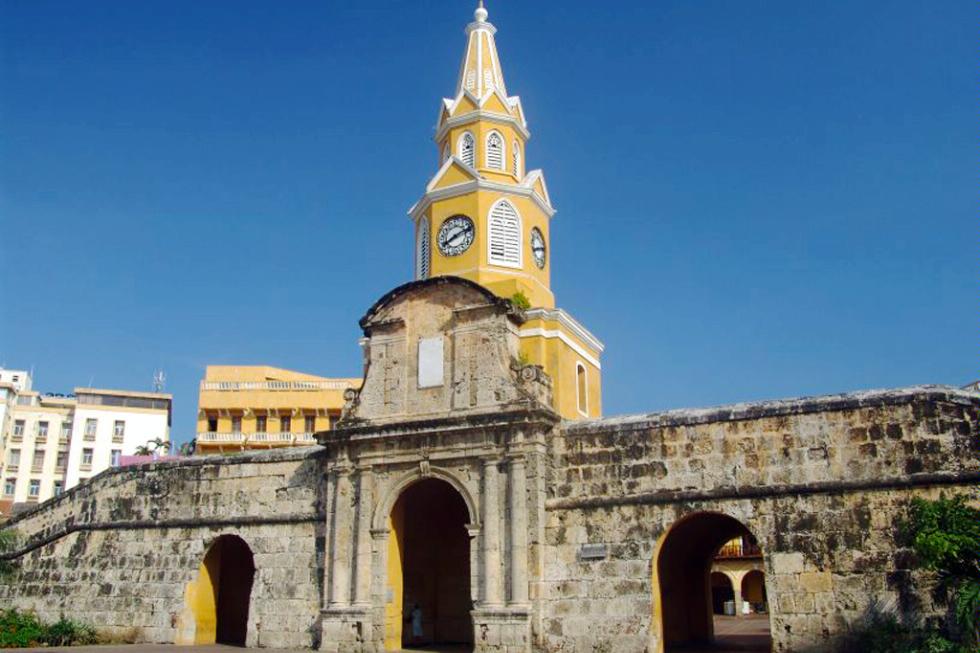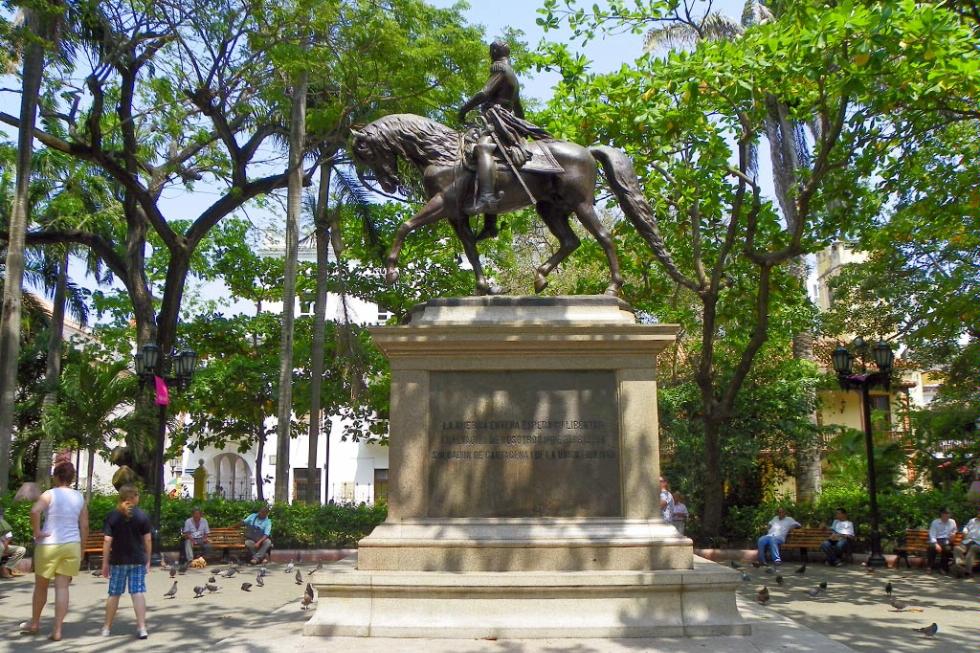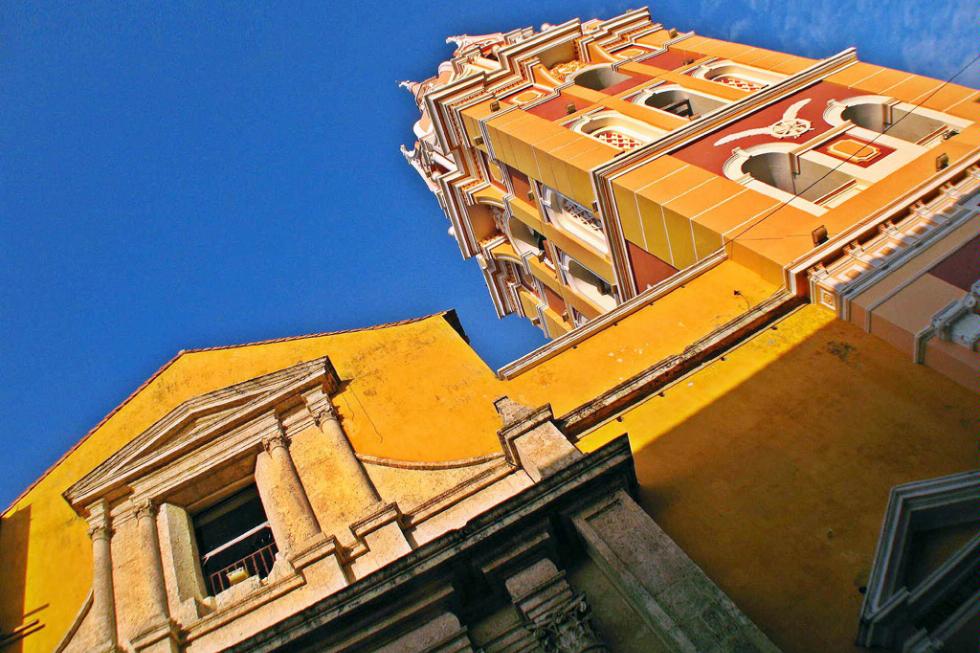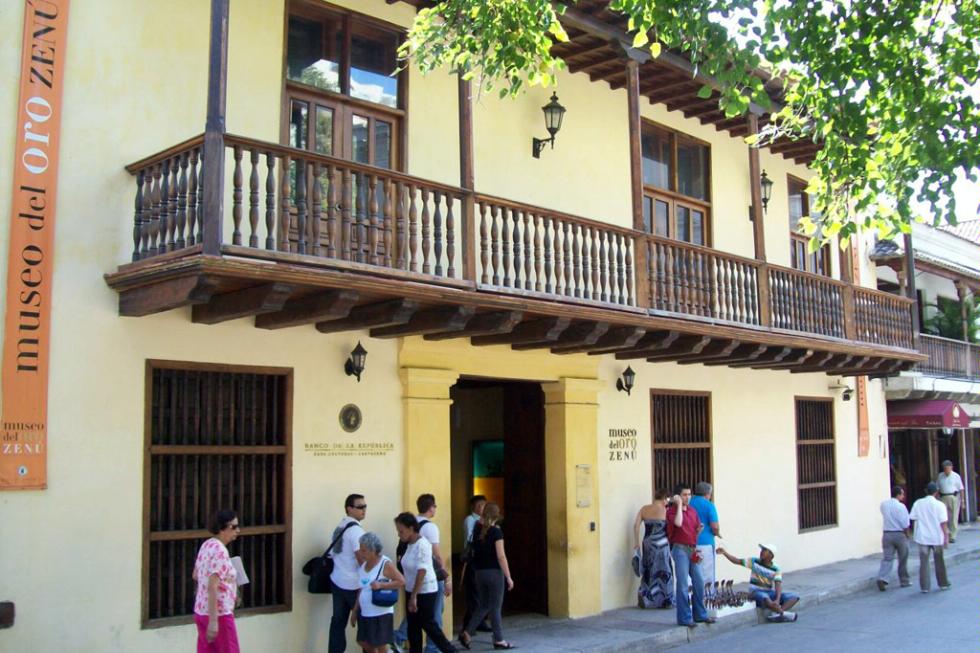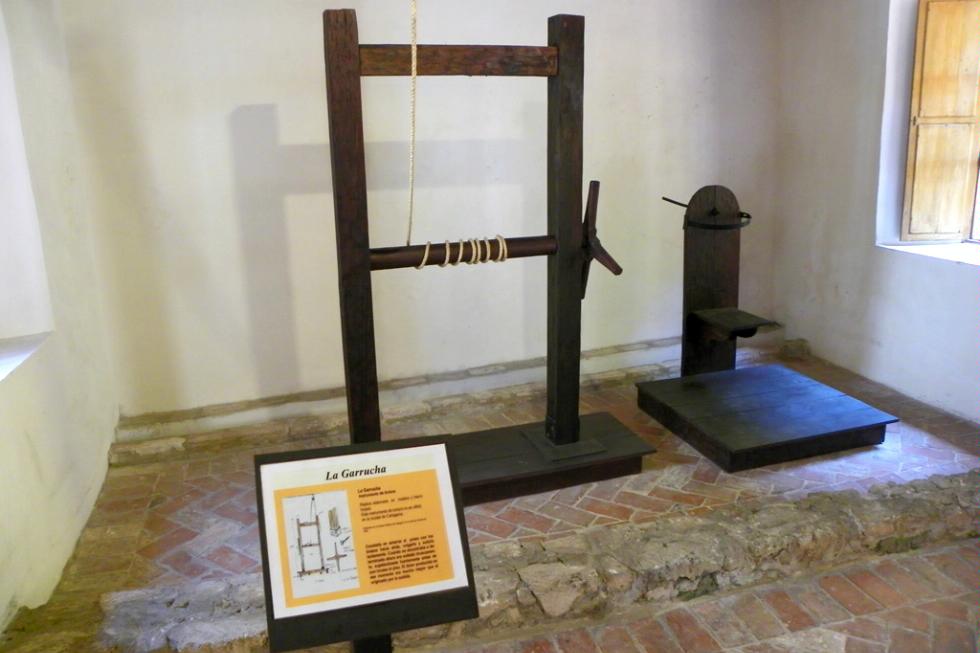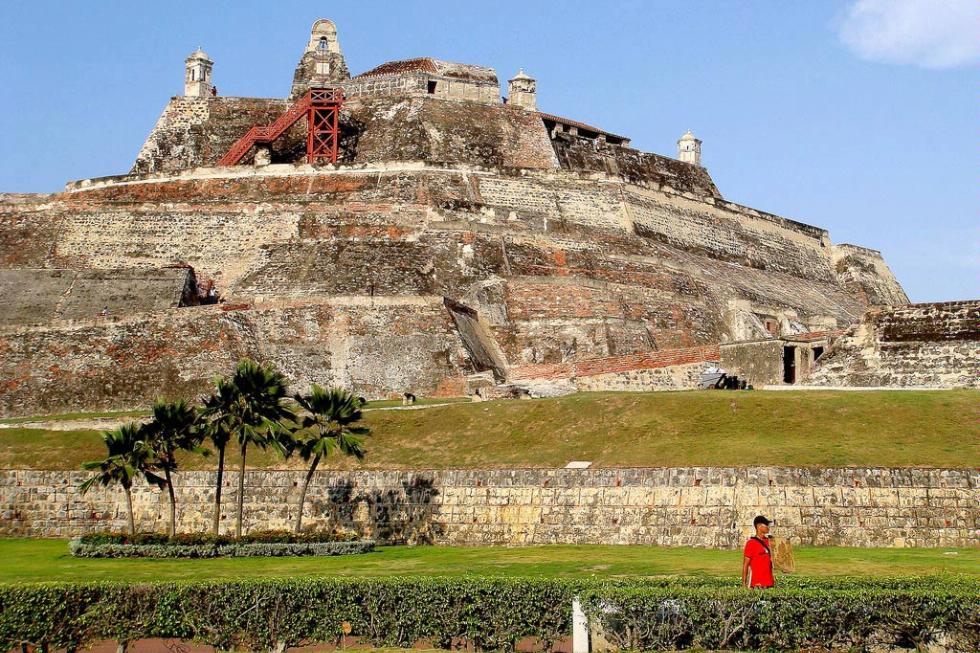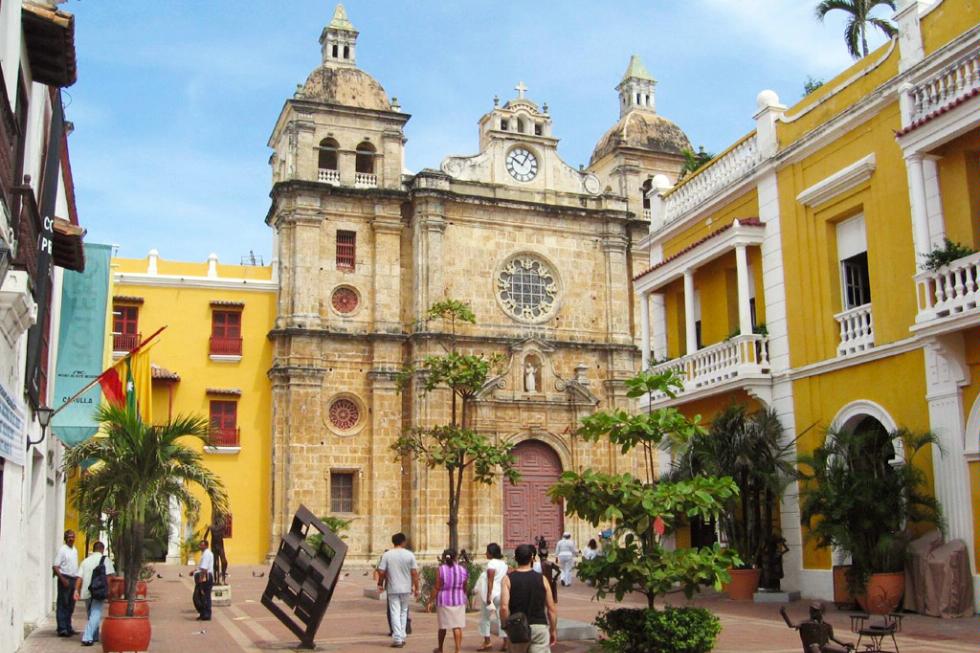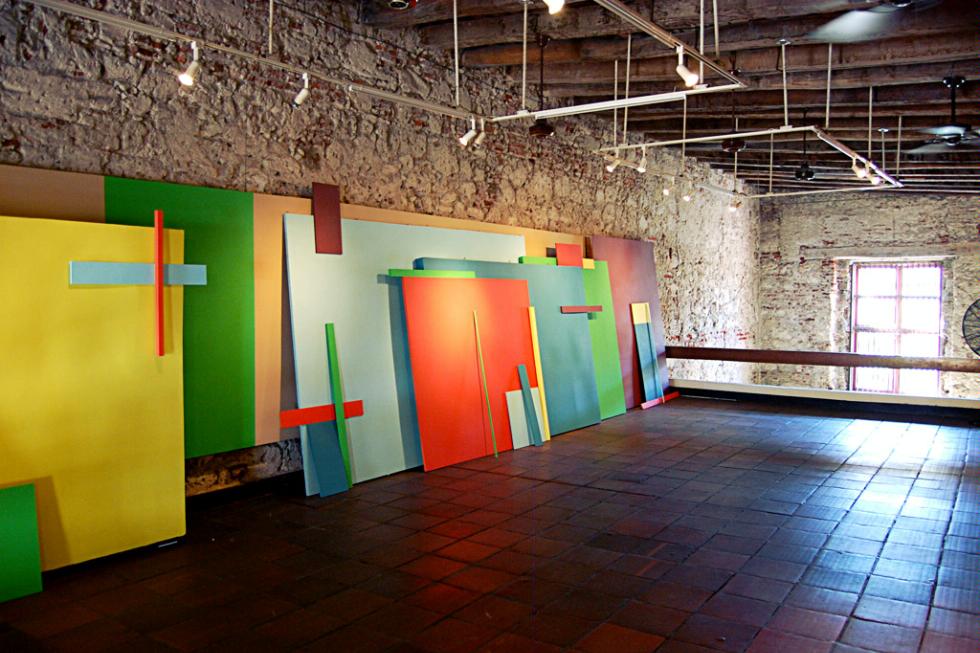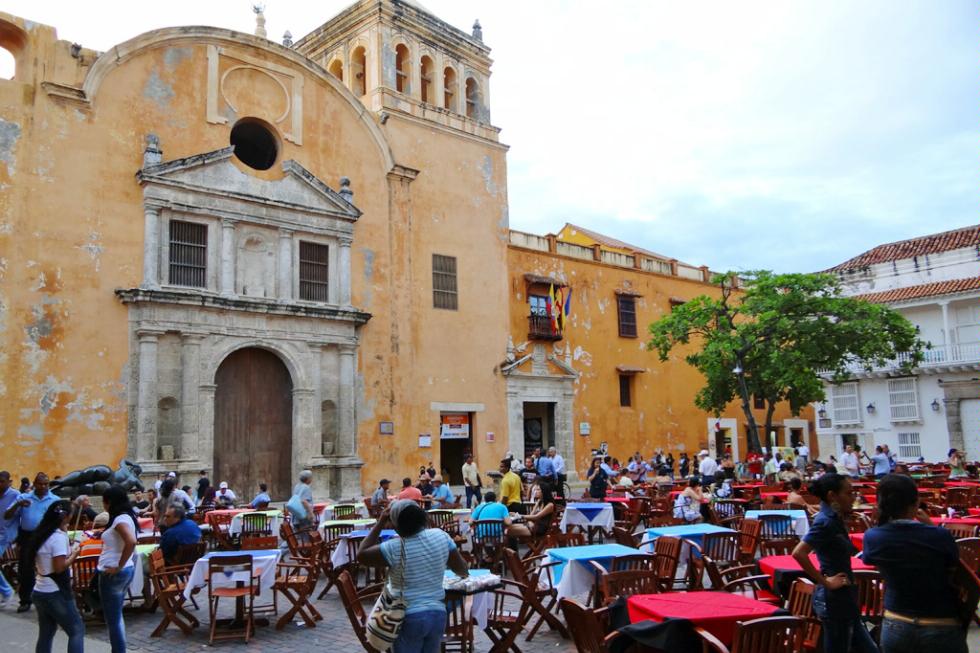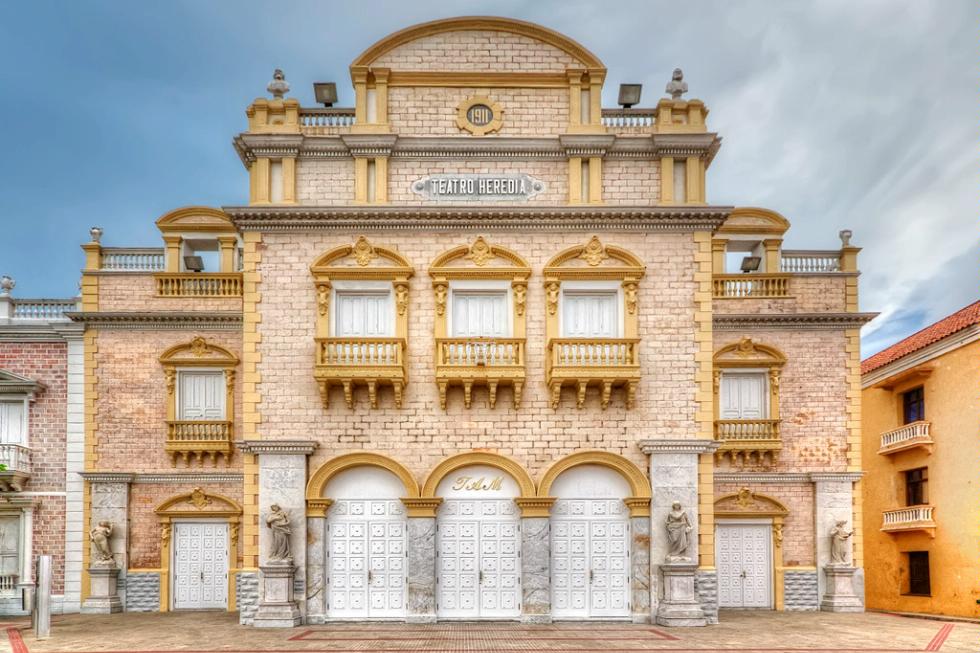Cartagena's Old Town: 10 Highlights
By
By Lisa Cheng
Though Cartagena has experienced a reinvigoration of late, its core and soul remains Old Towns historic sites. From picturesque colonial mansions to centuries-old monasteries, here are some of the highlights every traveler should see.
Photo Caption: Puerto del Rejol in Cartagena, Colombia
Though Cartagena has experienced a reinvigoration of late, its core and soul remains Old Towns historic sites. From picturesque colonial mansions to centuries-old monasteries, here are some of the highlights every traveler should see.
Photo Caption: Puerto del Rejol in Cartagena, Colombia
Puerta del Reloj
This 19th century Puerta del Reloj (clock tower) -- and symbol of the city -- sits atop the main entryway to the Old Towns walled enclosure. The two side archways formerly housed an armory and a chapel. Just beyond is the Plaza de los Coches (Square of the Carriages), lined with colorfully-hued houses and arcaded walkways.
Photo Caption: Puerto del Rejol in Cartagena, Colombia
Photo Caption: Puerto del Rejol in Cartagena, Colombia
Plaza de Bolivar
Some of the city's most beautiful colonial buildings are situated on Plaza de Bolivar, including the Gold Museum, the Palace of the Inquisition, and the Cathedral. An equestrian statue of eponymous Símon Bolívar dominates the leafy square.
Photo Caption: Plaza de Bolívar in Cartagena, Colombia
Photo Caption: Plaza de Bolívar in Cartagena, Colombia
Catedral de Cartagena
Originally built in 1576, the Catedral underwent numerous alterations over the eras. A first reconstruction happened after the bombardments of Francis Drake, while centuries later, stucco work, a dome and tower -- commissioned by Cartagena's first archbishop -- was tacked onto the original structure. In the central nave, a marble pulpit, and 18th-century gilded altar occupies the central nave in an otherwise simply adorned house of worship.
Where: Plaza de Bolívar
Photo Caption: The Catedral de Cartagena in Cartagena, Colombia
Where: Plaza de Bolívar
Photo Caption: The Catedral de Cartagena in Cartagena, Colombia
Museo del Oro Zenu
The Gold Museum in Cartagena may be small in scale in comparison to its counterpart in Bogota, yet its collection of jewelry, ceramics, and other artifacts glitter on a stage of its own in the cadre of a Baroque mansion. The works -- bird-shaped pendants, stylized human figures -- were forged by the Zenu, master goldsmiths, and an indigenous people that once inhabited the Caribbean plains.
Where: Plaza de Bolívar
Photo Caption: Museo del Oro Zenu in Cartagena, Colombia
Where: Plaza de Bolívar
Photo Caption: Museo del Oro Zenu in Cartagena, Colombia
Palacio de la Inquisición
A fine example of 18th-century colonial architecture, the Palacio de la Inquisición is reputed for its molded stone inner door and façade balconies. A spine-chilling collection of rusted torture devices (skull crushers, finger screws) hint at the palace's former identity: the punishment tribunal of the Inquisition.
Where: Plaza de Bolivar
Photo Caption: Palacio de la Inquisición in Cartagena, Colombia
Where: Plaza de Bolivar
Photo Caption: Palacio de la Inquisición in Cartagena, Colombia
Castillo de San Felipe de Barajas
A complex of battlements, bunkers, and tunnels, the Castillo de San Felipe is regarded as one of the most formidable examples of Spanish military architecture. It has much to do with the masterminding of military engineer Antonio de Arévalo, who oversaw construction, and the fortress's strategic location on a rocky crag overlooking the isthmus of Cebrero. Pirates and other invaders failed to overtake the Castillo, despite numerous attempts. As a result, Cartagena flourished under its defense.
Photo Caption: Castillo de San Felipe de Barajas in Cartagena, Colombia
Photo Caption: Castillo de San Felipe de Barajas in Cartagena, Colombia
Convento & Iglesia de San Pedro Claver
This convent and church, founded in the early 17th century, is a vestige of the Jesuit legacy in the New World. It's named after the Spanish-born monk known as the the Slave of Slaves or "Apostle of the Blacks," who slept in a tiny, white-walled room, which you can visit. In the adjacent church, a glass coffin -- embedded in the marble altar -- holds the Saint's remains.
Where: Plaza de San Pedro Claver
Photo Caption: Iglesia de San Pedro Claver in Cartagena, Colombia
Where: Plaza de San Pedro Claver
Photo Caption: Iglesia de San Pedro Claver in Cartagena, Colombia
Museo del Arte Moderno
This 17th-century former customs house guards a trove of Latin American sculptures and paintings, including those of native talents Alejandro Obrego, Fernando Botero, and Enrique Grau -- Colombia's trio of key contemporary artists.
Where: Plaza de San Pedro Claver
Photo Caption: Museo de Arte Moderno in Cartagena, Colombia
Where: Plaza de San Pedro Claver
Photo Caption: Museo de Arte Moderno in Cartagena, Colombia
Iglesia de Santo Domingo
This 16th-century church is reputable for its stature (the oldest in the city) and its crooked bell tower (the devil's doing, allegedly). The light and spacious interior -- punctuated by a Baroque altar and carbed tombstones -- is a contrast to its wide and heavy exterior.
Where: Plaza de Santo Domingo
Photo Caption: Iglesia de Santo Domingo in Cartagena, Colombia
Where: Plaza de Santo Domingo
Photo Caption: Iglesia de Santo Domingo in Cartagena, Colombia
Teatro Heredia Adolfo Mejia
Unveiled at the turn of the century, this hall was inspired by the neo-Baroque Teatro Tacon of Habana. After years of cobwebs and abandon, it has reprised its role as a cultural and artistic center with architectural highlights such as wooden balconies with elaborate latticework and ceiling frescos by Enrique Grau.
Where: Plaza de la Merced
Photo Caption: Teatro Heredia Adolfo Mejia in Cartagena, Colombia
Where: Plaza de la Merced
Photo Caption: Teatro Heredia Adolfo Mejia in Cartagena, Colombia





